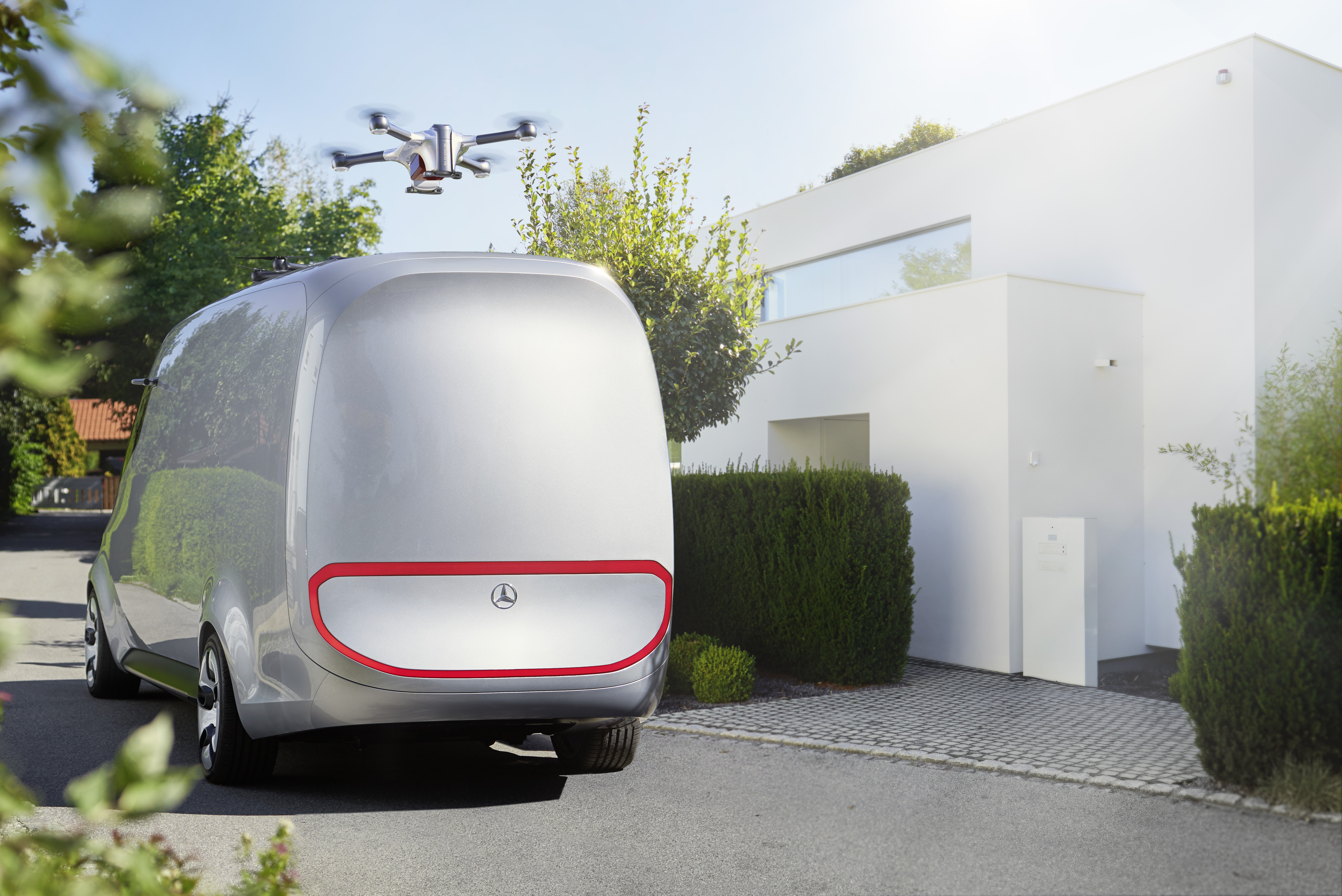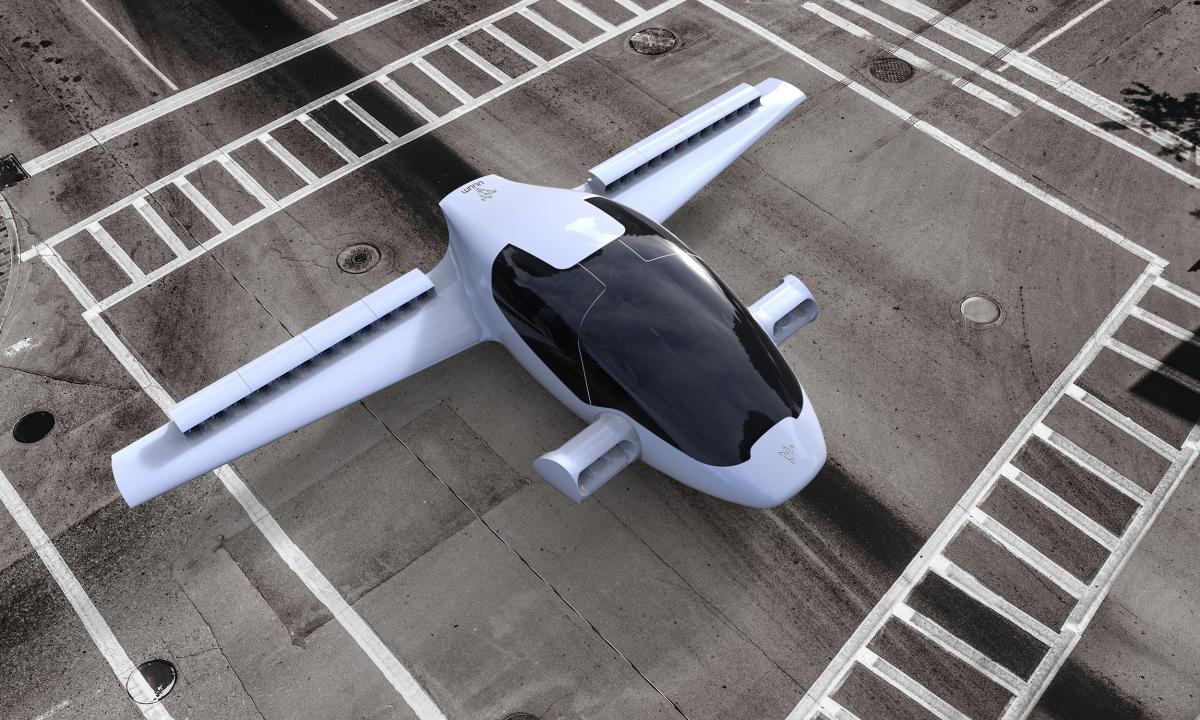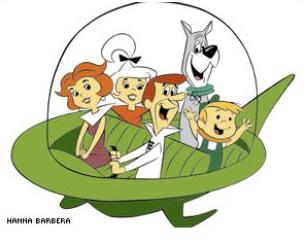Representative End User Clients


Representative Automation Clients
Representative Software Clients
 Mercedes-Benz Vision Van - Photo source Matternet Just a few weeks ago I took a glider flight with a group from Aurora Flight Sciences. This company can convert most any aircraft to a drone or build new drones from scratch. It is only a matter of time when a drone will be able to pick you up at your house and deliver you where you want to go. The futuristic "Jetson" age is arriving fast! The drone delivers you to work and you put your feet on the desk while you press a single button at an automated factory just like George Jetson did in the famous cartoon series in 1962. Still not convinced we are entering the Jetson age? Maybe you will like to go to work in the sleek Lilium one of many small aircraft based on drone technology that are in development.
Mercedes-Benz Vision Van - Photo source Matternet Just a few weeks ago I took a glider flight with a group from Aurora Flight Sciences. This company can convert most any aircraft to a drone or build new drones from scratch. It is only a matter of time when a drone will be able to pick you up at your house and deliver you where you want to go. The futuristic "Jetson" age is arriving fast! The drone delivers you to work and you put your feet on the desk while you press a single button at an automated factory just like George Jetson did in the famous cartoon series in 1962. Still not convinced we are entering the Jetson age? Maybe you will like to go to work in the sleek Lilium one of many small aircraft based on drone technology that are in development.  This looks a lot like the Jetson vehicle, but a little slower: vertical takeoff/landing, 248 MPH and 310 mile cruising range for 2 passengers. Just plug it in to recharge it or maybe you just use drones as a service, why pay to own one and have it sit idle for long periods. Two-passenger sport vehicle could become a drone. Photo source Lilium Maybe you would find the emergency drone patient delivery service of value instead of waiting for the "flight for life helicopter" or maybe a drone delivers the defibrillator or other critical medicines like snake bite antidotes or Narcan for an Opiate drug overdose. Delivering products to the consumer is a fundamental part of the supply chain. Using UPS, Federal Express, DHL, or USPS trucks with a driver is slow and energy inefficient for delivering small packages when compared to drone delivery. It is not uncommon to deliver a 200-pound person using a 4000 pound SUV with 200+ horsepower. Simple physics shows that our current systems have huge potential for energy efficiency improvements. "The internet of airborne things" is already at work to change this. It will be the software and network communications that makes autonomy feasible. Autonomy is an essential element for delivery by drone. Never send a pilot, driver, or ship captain to do a drone's job! Compared to a self-driving car, autonomous drones should be much simpler. An autonomous drone need not have the ability to distinguish a dog from a child and drones are not confined to a physical road and don't have the congestion of city traffic. As a completely new field of air traffic management without a legacy system there is an open opportunity to create a new air traffic control system for drones that works with existing air traffic controls and leverages so much new technology in the areas of wireless communications, GPS, robotics, multirotor and fixed wing drones, and flight control systems. In a previous post we noted that FAA part 107 makes it easier to start some types of commercial drone businesses. This rule applies to drones operated by a pilot under 400 feet and within line of sight. This rule does not make it easier for autonomous drone delivery and the FAA has made it clear it is not ready to issue 333 Exemptions to allow drone delivery or autonomous operation except in the most rural of locations. So where is the bottleneck here? FAA has decades of experience with manned aviation, but procedures and systems that are established for manned aviation are not up to the task of managing swarms of autonomous and piloted drones sharing airspace and wireless and satellite communication networks with manned aircraft. As drones can cross borders this new flight control system will need to have international standards. NASA is working on the early stages of such a traffic control system. Drone registration in the US has already exceeded the total number of manned aircraft registered with the FAA. You might be able to imagine the issues of coordinating dozens of drones making simultaneous deliveries on busy city streets, flying above people and cars. Air traffic control is essential for drone safety. Drones present real hazards flying above people, cars, power lines, and near manned aircraft. FAA has does not yet allow drones to operate above people. There are many other considerations for physical security, cybersecurity, privacy, and noise pollution that FAA rulemaking must take into account. It will take some time to work such a complex technical and political problem out. While it may be a few years away, the “Internet of Airborne things” is quickly taking us to the Jetson age.
This looks a lot like the Jetson vehicle, but a little slower: vertical takeoff/landing, 248 MPH and 310 mile cruising range for 2 passengers. Just plug it in to recharge it or maybe you just use drones as a service, why pay to own one and have it sit idle for long periods. Two-passenger sport vehicle could become a drone. Photo source Lilium Maybe you would find the emergency drone patient delivery service of value instead of waiting for the "flight for life helicopter" or maybe a drone delivers the defibrillator or other critical medicines like snake bite antidotes or Narcan for an Opiate drug overdose. Delivering products to the consumer is a fundamental part of the supply chain. Using UPS, Federal Express, DHL, or USPS trucks with a driver is slow and energy inefficient for delivering small packages when compared to drone delivery. It is not uncommon to deliver a 200-pound person using a 4000 pound SUV with 200+ horsepower. Simple physics shows that our current systems have huge potential for energy efficiency improvements. "The internet of airborne things" is already at work to change this. It will be the software and network communications that makes autonomy feasible. Autonomy is an essential element for delivery by drone. Never send a pilot, driver, or ship captain to do a drone's job! Compared to a self-driving car, autonomous drones should be much simpler. An autonomous drone need not have the ability to distinguish a dog from a child and drones are not confined to a physical road and don't have the congestion of city traffic. As a completely new field of air traffic management without a legacy system there is an open opportunity to create a new air traffic control system for drones that works with existing air traffic controls and leverages so much new technology in the areas of wireless communications, GPS, robotics, multirotor and fixed wing drones, and flight control systems. In a previous post we noted that FAA part 107 makes it easier to start some types of commercial drone businesses. This rule applies to drones operated by a pilot under 400 feet and within line of sight. This rule does not make it easier for autonomous drone delivery and the FAA has made it clear it is not ready to issue 333 Exemptions to allow drone delivery or autonomous operation except in the most rural of locations. So where is the bottleneck here? FAA has decades of experience with manned aviation, but procedures and systems that are established for manned aviation are not up to the task of managing swarms of autonomous and piloted drones sharing airspace and wireless and satellite communication networks with manned aircraft. As drones can cross borders this new flight control system will need to have international standards. NASA is working on the early stages of such a traffic control system. Drone registration in the US has already exceeded the total number of manned aircraft registered with the FAA. You might be able to imagine the issues of coordinating dozens of drones making simultaneous deliveries on busy city streets, flying above people and cars. Air traffic control is essential for drone safety. Drones present real hazards flying above people, cars, power lines, and near manned aircraft. FAA has does not yet allow drones to operate above people. There are many other considerations for physical security, cybersecurity, privacy, and noise pollution that FAA rulemaking must take into account. It will take some time to work such a complex technical and political problem out. While it may be a few years away, the “Internet of Airborne things” is quickly taking us to the Jetson age.  ARC clients might wish to take a look at this recent ARC report on drones: Drones-for-Industry-and-Commerce We also encourage end users to take the ARC drone survey https://www.surveymonkey.com/r/ARCdrones
ARC clients might wish to take a look at this recent ARC report on drones: Drones-for-Industry-and-Commerce We also encourage end users to take the ARC drone survey https://www.surveymonkey.com/r/ARCdrones
